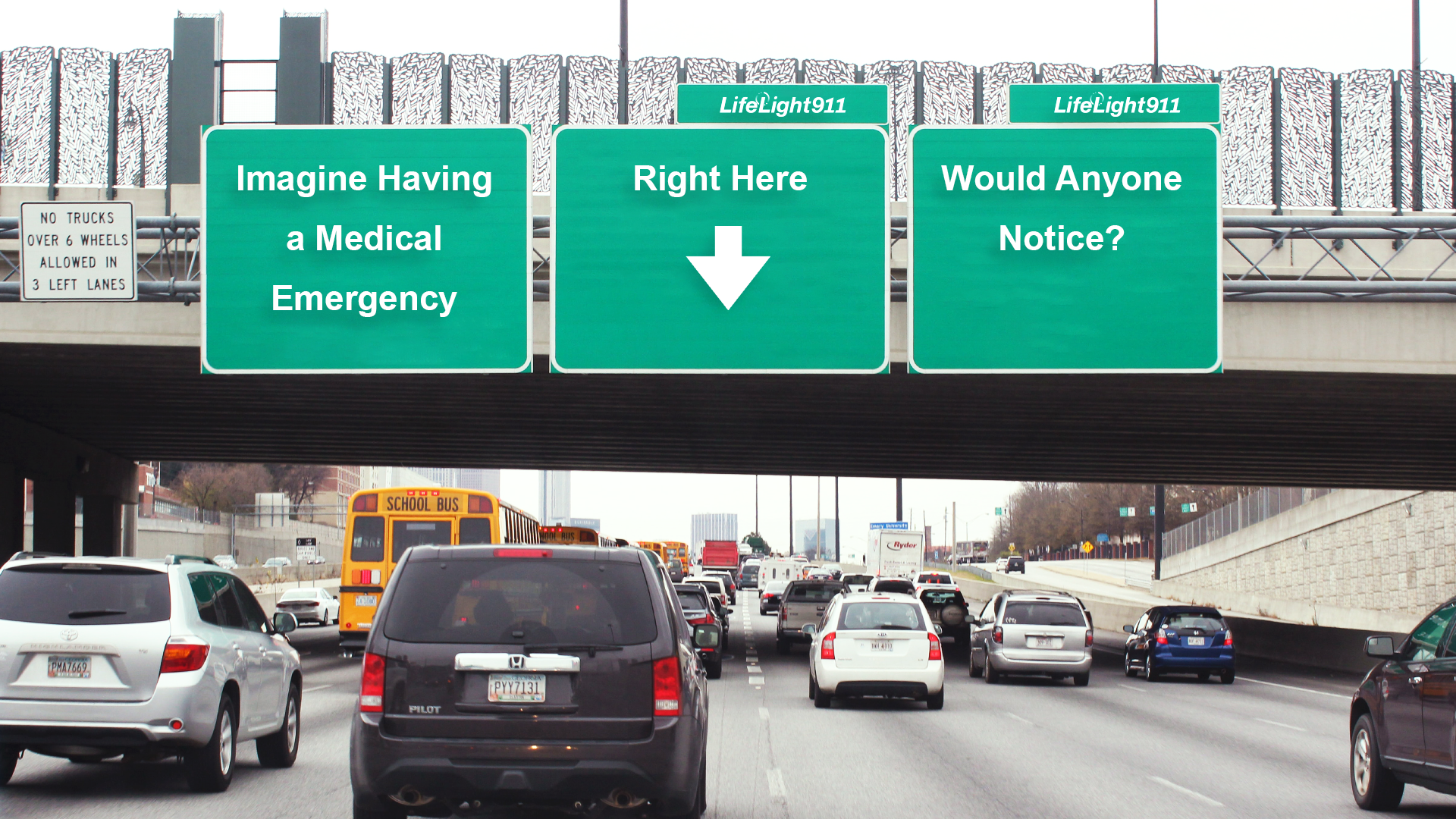Hazard Lights = Don't Hit Me!
What About Getting Immediate Help?
“Don’t hit me” hazard lights are designed to alert other drivers that your vehicle exists and might not be working properly. That is why most people won’t stop to see what’s wrong.
So how does anyone get immediate help?
When seconds count, help is minutes away. 9-1-1 services average 15 minutes to arrive on scene. OnStar takes even longer.
As long as there are people, there will be emergencies, even in self-driving cars. Distractions, health problems, children, criminals, natural disasters, potholes, bad drivers, car design, and the list goes on and on - all can impact you and your loved ones.
So how does anyone get immediate help?
Cars have been constantly updated since their creation through accident avoidance, self parking, self driving, seat restraint technology, and pedestrian protection, but only one of these features will protect during an auto accident.
History of Car Manufacturers' "Focus" on Safety

Where are the Emergency Signals?
It's Time for a Change.
Car makers have had 164 years to make something like this - and haven’t. Since car makers have been very resistant to safety changes over the last century (see chart), and very good at shaping public opinion, it may take some time for people to realize that our emergency signal revolutionizes car safety.
Car Safety is a Myth: It's Just a Box and Your Phone
Historically, car manufacturers have focused on what happens during an accident, and only up to 40mph. Over 40mph? All bets are off as to survivability.
It doesn’t stop there. In terms of vulnerability, anyone with a screwdriver can get into just about any car. Hazard lights, doors, and windows “aren’t enough protection for anything tougher than weather”
.
In a car, “being connected” is geared towards entertainment, advertising, and tracking you… not safety. If auto manufacturers and government regulators were genuinely concerned with your safety (and not entertainment), some form of emergency lighting could easily have been integrated decades ago.
So how does anyone get immediate help?

911 and OnStar - Aren’t Those "Car Safety Features"?
911 and OnStar are great life saving services, but don’t be mislead or complacent - they are only services and don’t have any duty to rescue you. They don’t even have to pick up the phone!
The average wait time for help from these services is 15 minutes, but that 15 minutes is AFTER the dispatch call reaches the chosen responding agency. The 911 system works by routing your call to the nearest call center and then gets prioritized according to severity. The problem is that there are an average of 660,000 calls a day which is further complicated by limitations of cell service reliability and coverage, dispatch staff training, availability of emergency equipment, distance, traffic, weather, pinpointing your location, parking structures, and much more. Unfortunately wait times are increasing and during civil unrest, citizens must fend for themselves.
Worse? Only about 5% of 911 dispatch centers can receive text messages! This means that tens of millions of drivers that are hearing or speech impaired will be helped by LifeLight911 with your support.
LifeLight911 Features and Specifications:
- Fits any and all cars - past, present, and future
- Ruggedized
- Military grade hardware
- Adaptive LED brightness
- Full featured companion app for iOS and Android
- Waterproof up to 30 ft.
- Temperature range of -20F to 180F
- Fail-safe deactivation
- Bluetooth 5.0
- Hard-wired, bluetooth, and app activation
- Lifetime warranty (so long as it is installed by a professional)
Learn more on our information resource page.

